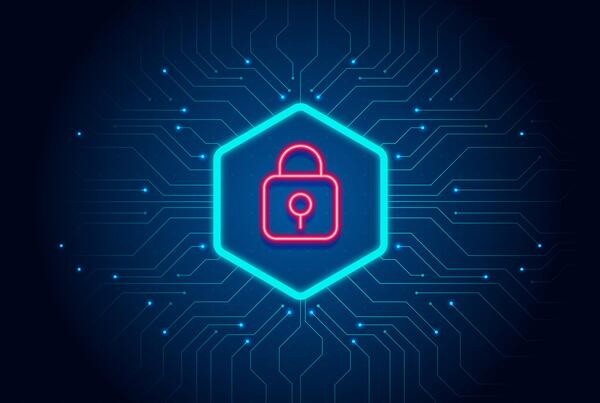Protecting all types of data from loss, corruption, or theft is why cyber security is so crucial. Personal information, protected health data, intellectual property, data, and government and business information systems all fall under this category. Your company will be an easy target for cybercriminals if it has a cybersecurity program to protect itself from data breach efforts.
Increases in worldwide connection and the use of cloud services like Amazon Web Services to store sensitive data and personal information are raising both inherent risk and residual risk. The likelihood of a successful cyber attack or data breach occurring at your firm is increasing due to the widespread bad design of cloud services and the increasing sophistication of cyber thieves.
What is Cybersecurity?
Cybersecurity refers to the readiness of an organization to prevent, detect, and respond to cyber threats and incidents. With the help of social engineering and artificial intelligence (AI), cybercriminals are finding new ways to compromise your data that were previously difficult or impossible to do.
Introducing the next generation of new technology that will have access to our linked gadgets via Bluetooth and Wi-Fi will only increase the world’s reliance on these technologies.
Strong password rules, such as multi-factor authentication, should be adopted alongside intelligent cloud security solutions to keep client data protected while adopting new technologies.
Cybersecurity and Its Significance
The value of cyber security is growing rapidly. In essence, modern civilization is increasingly dependent on technology, and this tendency shows no signs of abating. Identity theft-inducing data leaks are now widely disseminated via social media. Nowadays, people are more likely to keep their sensitive data in cloud storage services like Dropbox or Google Drive.
The truth is that everyone, from sole proprietors to multi-national conglomerates, uses some form of computer system on a daily basis. We now have a plethora of possible security risks that just didn’t exist a few decades ago because of this, the proliferation of cloud services, the inadequacy of cloud service security, cellphones, and the Internet of Things (IoT). Although cybersecurity and information security have many similarities, it is nonetheless important to distinguish between the two.
Cybercrimes are receiving more and more attention from governments worldwide. The General Data Protection Regulation (GDPR) provides an excellent illustration. Because of this regulation, all EU-based businesses are required to: • notify customers of data breaches • hire a data protection officer • get consent from users before processing their data • anonymize personal information to protect their reputation
More and more information is being made public, and this is not just a European phenomenon. Each of the 50 states in the U.S. has its own law governing how a data breach should be reported and handled. There are certain consistent elements, such as the need to inform the appropriate authorities and affected parties as soon as feasible and the imposition of a monetary penalty.
In 2003, California became the first state to regulate data breach disclosures, mandating that individuals and organizations notify people who may have been compromised “without reasonable delay” and “soon following discovery.” Companies can be penalized up to $7,500 per victim, and victims can sue for up to $750 in damages.
Due to this, standards bodies like the National Institute of Standards and Technology (NIST) have released frameworks to assist businesses in assessing their security posture, enhancing their cyber defenses, and warding off cyber attacks.
Why is Cybercrime Increasing?
Theft of private information is by far the most common and costly form of cybercrime. mostly as a result of the growing number of cloud services that expose user identities online.
But it isn’t the only one on the list. Threats to the reliability of electricity grids and other infrastructure dependent on industrial controls are always a possibility. In addition to identity theft, cyber assaults can also be launched to undermine confidence in a company, government, or other institution by destroying or altering data.
Cybercriminals are increasing in sophistication, expanding their range of attacks and diversifying the types of systems they want to compromise.
Cyberattacks using social engineering (such as ransomware, phishing, or spyware) continue to be the most common and straightforward. Because of the prevalence of attacks through third- and fourth-party suppliers, it is crucial to implement and maintain effective vendor risk management and third-party risk management procedures.
The average cost of cybercrime for a company jumped by $1.4 million to $13.0 million, while the average number of data breaches rose by 11 percent to 145, according to Accenture and the Ponemon Institute’s Ninth Annual Cost of Cybercrime Study. Managing the potential dangers associated with data has never been more crucial.
Credit card numbers, bank account information, protected health data, personally identifiable information, trade secrets, intellectual property, and other sensitive business information are all at risk when a data breach occurs. In addition to “data breach,” you may also hear the terms “data leak,” “cloud leak,” “information leakage,” and “data spill.”
Cybercriminals are able to attack targets outside their jurisdiction, which makes law enforcement’s job more difficult; the dark web is becoming more lucrative and user-friendly; mobile devices and the Internet of Things are becoming more commonplace; and all of this has contributed to a rise in cybercrime.
What is the Impact of Cybercrime?
There are many factors that contribute to the cost of cybercrime. Each of these factors can be attributed to a poor focus on best cybersecurity practices.
A lack of focus on cybersecurity can damage your business in a range of ways including:
Economic Costs
Theft of intellectual property, corporate information, disruption in trading, and the cost of repairing damaged systems
Reputational Cost
Loss of consumer trust, loss of current and future customers to competitors, and poor media coverage
Regulatory Costs
GDPR and other data breach laws mean that your organization could suffer from regulatory fines or sanctions as a result of cybercrimes.
All businesses, regardless of the size, must ensure all staff understand cybersecurity threats and how to mitigate them. This should include regular training and a framework to work with that aims to reduce the risk of data leaks or data breaches.
Given the nature of cybercrime and how difficult it can be to detect, it is difficult to understand the direct and indirect costs of many security breaches. This doesn’t mean the reputational damage of even a small data breach or other security event is not large. If anything, consumers expect increasingly sophisticated cybersecurity measures as time goes on.
How to Protect your Organization Against Cybercrime
There are simple steps you can take to increase security and reduce the risk of cybercrime:
Educate Staff
Human error was the source of 90% of data breaches in 2019. This worrying statistic, however, has a silver lining. Data breaches may be greatly reduced or eliminated altogether if employees were properly trained to recognize and counteract cyber threats. Such instructional programs might also boost the value of all cybersecurity solution expenditures since they would prevent personnel from unwittingly bypassing expensive security controls to aid cybercrime.
Protect Your Sensitive Data
Purchase data loss prevention software, keep tabs on the security of your third- and fourth-party vendors, and run regular scans for exposed information and compromised credentials. If not addressed, data leaks can provide hackers access to private networks and allow them to steal confidential information. A data leak discovery solution that can additionally monitor leakage across a third-party network is essential.
By preventing vendor data leaks, most data breaches can be prevented. Almost 60% of all data breaches are the result of compromised third-party providers.
Implement a Third-Party Risk Management (TPRM) Solution
As part of a comprehensive cyber security risk assessment strategy, automating processes like sending out vendor evaluation questionnaires can help cut expenses.
Why is cybersecurity vital is no longer a valid question for businesses to ask; rather, they should be asking how they can ensure their cybersecurity policies are adequate to meet the requirements of GDPR and other legislation and protect themselves from sophisticated cyber assaults.









